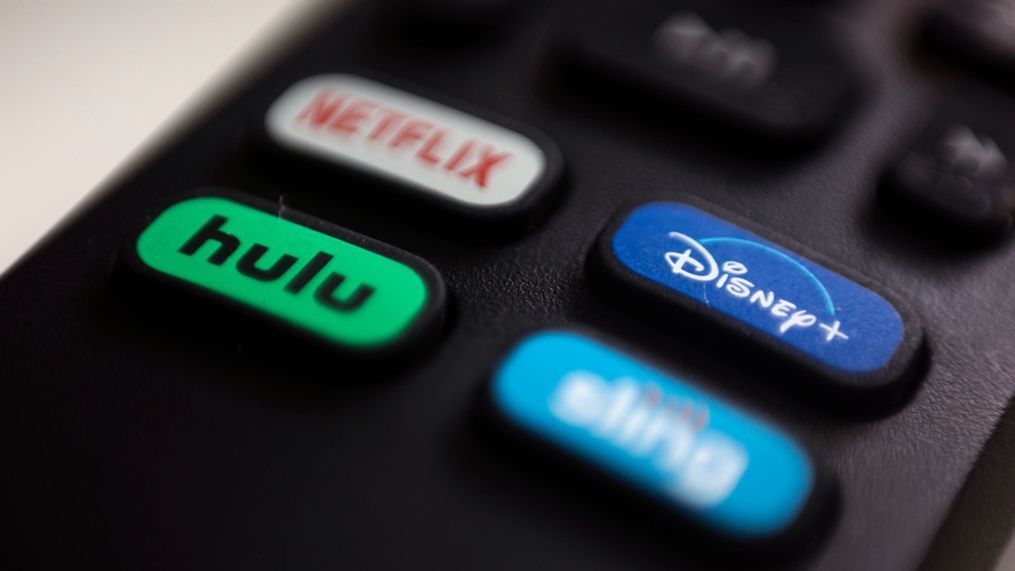Streaming services spending up 70% since 2021: Report

(TND) — Americans have upped their spending on streaming services 70% since 2021, according to a new report from the Bank of America Institute.
And the share of households paying over $100 a month on streaming has more than doubled.
“People do have to eat, and they do have to have shelter, but I think streaming is somewhere pretty close in a lot of people's minds as to what are the bare necessities,” said Robert Thompson, the director of the Bleier Center for Television and Popular Culture at Syracuse University.
Thompson said the new report from the Bank of America Institute confirmed Americans have a pretty healthy tolerance for price increases and service changes in the nascent industry of streaming entertainment.
Thompson said streaming customers are even willing to accept ads, which are inserted in an “inelegant” and “clumsy” fashion compared to the commercial breaks of traditional broadcast television.
The Bank of America Institute economists behind the new report said people might be poised to pull back on out-of-home experiences this year and back towards in-home entertainment.
Some of the increases in streaming expenditures can be explained by the price increases, both the Bank of America Institute and Thompson said.
Streaming platforms typically offer a range of plans, from basic ad-supported options to premium ad-free plans.
For Netflix, for example, the range is $6.99 to $22.99.
But all the big streamers have increased their prices over the last several years.
Premium-tier pricing for Netflix was $15.99 in 2019, according to The Verge.
Max’s premium tier is up $5 since 2019. Hulu is up $6.
Disney-plus was $6.99 in 2019, according to The Verge. Now, it’s $13.99.
Then, there have been the password-sharing crackdowns.
Thompson said that’s increased the subscriber bases for the streaming companies.
But demand outside of those factors still has been increasing, the Bank of America Institute report said.
As of January, about 39% of households had a monthly streaming payment.
More than 50% of millennials and Gen Xers pay for two or more streaming subscriptions.
Meanwhile, top cable providers had a net loss of over 1 million video subscribers in the most recently reported quarter by the Leichtman Research Group.
Bruce Leichtman, president and principal analyst for the Leichtman Research Group, previously told The National Desk that cable companies are doing just fine in the era of cord-cutting.
And they aren't all that concerned if you cancel your TV subscription.
“Cable companies are now internet companies,” Leichtman said. “That’s their main business. That’s the business that they’re really concerned about. That’s the most profitable side of the business. That’s the way they think of themselves.”
Leichtman said these companies have been transitioning from TV providers to internet providers for the better part of two decades.
And, of course, folks need internet services if they want streaming services.
Thompson said one of the early appeals of streaming vs. cable was that streaming was thought to be cheaper.
But going the à la carte route with streaming services can add up quickly, too.
One advantage of streaming over cable is the ability to binge and cancel with ease. There’s no appointment with a cable technician needed to start or stop a streaming subscription.
And Thompson said “younger people who are streaming at the highest rates have gotten very savvy” with so-called churn.
Deloitte has reported that churn is over 40% over a six-month period. And a quarter of consumers have “churned and returned” within that amount of time.
Thompson said it’s likely we'll see consolidation in the streaming industry as customers and companies both try and find equilibrium.
He noted the big team-up ESPN, Fox and Warner Bros. Discovery announced last month. Those companies plan a sports streaming platform that will include games from all the major leagues and content from 15 linear networks, including ESPN, Fox and TNT.
“That was consolidation with not just a capital ‘C,’ (but) capital all of the letters,” Thompson said.
